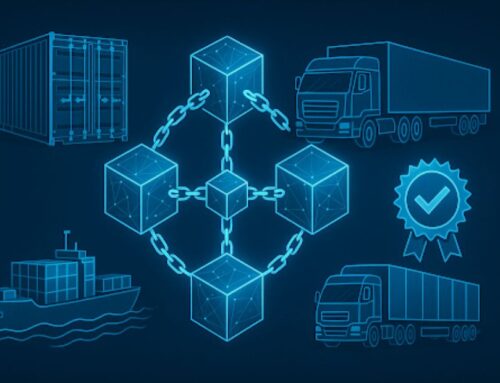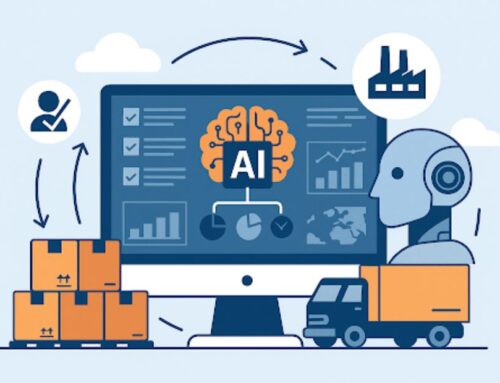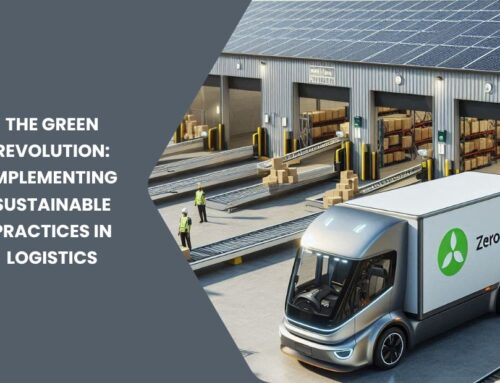The integration of e-commerce and supply chain management is essential for businesses to remain competitive in today’s dynamic market. Effective integration can streamline operations, reduce costs, and enhance customer satisfaction. This article explores various strategies to achieve seamless integration between e-commerce platforms and supply chain operations, providing businesses with the tools needed to thrive in the digital age. We’ll discuss technological advancements, inventory management techniques, logistics optimization, and more, offering a comprehensive guide to optimizing your e-commerce supply chain.
As e-commerce continues to grow, so does the complexity of managing the supply chain. Businesses must ensure that their supply chains are agile, efficient, and capable of meeting the demands of today’s consumers. This involves integrating advanced technologies, optimizing logistics, and adopting sustainable practices. By focusing on these areas, companies can improve their operational efficiency and provide a better customer experience.
Leveraging Advanced Technologies
The use of advanced technologies is crucial for integrating e-commerce and supply chain management. Technologies such as artificial intelligence (AI), the Internet of Things (IoT), blockchain, and data analytics play pivotal roles in enhancing visibility, efficiency, and decision-making processes. AI and machine learning can predict demand trends, optimize inventory levels, and improve customer service through chatbots and personalized recommendations. IoT devices enable real-time tracking of goods, providing transparency and reducing the risk of errors.
Blockchain technology ensures secure and transparent transactions, enhancing trust among supply chain partners and reducing fraud. By implementing these technologies, businesses can create a more responsive and resilient supply chain that meets the evolving demands of the e-commerce landscape. For instance, Walmart uses blockchain to track the origin and movement of produce, enhancing food safety and traceability.
Effective Inventory Management
Inventory management is a cornerstone of successful e-commerce and supply chain integration. Accurate demand forecasting, facilitated by data analytics, helps businesses maintain optimal inventory levels, preventing stockouts and overstocking. Advanced inventory management systems (IMS) provide real-time updates on stock availability, ensuring that customers receive accurate information about product availability and delivery times.
Additionally, utilizing warehouse management systems (WMS) can enhance the efficiency of order processing and fulfillment. These systems provide visibility into warehouse operations, enabling better organization and quicker response times to customer orders. By maintaining precise inventory control, businesses can reduce costs and improve customer satisfaction. Amazon’s use of robotics and AI in their fulfillment centers exemplifies how technology can streamline inventory management and improve operational efficiency.
Optimizing Logistics and Distribution
Logistics and distribution are critical components of the e-commerce supply chain. Partnering with reliable third-party logistics (3PL) providers can help businesses manage transportation and delivery more efficiently. 3PL providers offer expertise in route optimization, freight management, and last-mile delivery, ensuring that products reach customers promptly and in good condition.
Implementing real-time tracking and communication systems enhances transparency and allows customers to monitor their deliveries, increasing trust and satisfaction. Moreover, optimizing logistics involves selecting strategic warehouse locations to reduce shipping times and costs, further improving the overall efficiency of the supply chain. For example, by using strategically placed distribution centers, companies like Zappos have been able to offer rapid delivery services to their customers, significantly enhancing the customer experience.
Enhancing Customer Experience
Customer experience is a vital aspect of e-commerce and supply chain integration. Providing real-time updates, transparent communication, and efficient delivery services are essential for maintaining customer satisfaction. Ensuring fast, reliable, and accurate deliveries can lead to repeat business and positive reviews.
Incorporating customer feedback into supply chain strategies can also help identify areas for improvement. Businesses should focus on creating a seamless and hassle-free shopping experience, from order placement to delivery and returns, to build long-term customer loyalty. Companies like Nordstrom excel in customer experience by integrating their supply chain operations with customer service platforms, allowing for easy returns and exchanges.
Sustainable Practices
Sustainability is becoming increasingly important in supply chain management. Adopting eco-friendly practices, such as using sustainable packaging, optimizing transportation routes to reduce emissions, and implementing energy-efficient technologies, can help businesses meet environmental goals and appeal to eco-conscious consumers.
Sustainable supply chain practices not only benefit the environment but also enhance brand reputation and customer loyalty. By prioritizing sustainability, businesses can differentiate themselves in a competitive market and attract a growing segment of environmentally aware consumers. For instance, Patagonia’s commitment to sustainable practices, from sourcing materials to shipping products, has strengthened its brand image and customer base.
Integrating with Partners and Suppliers
Effective integration with partners and suppliers is crucial for a seamless supply chain. Utilizing electronic data interchange (EDI) and other integration tools can streamline communication and data exchange, reducing errors and improving collaboration.
Building strong relationships with suppliers ensures timely delivery of raw materials and products, minimizing disruptions in the supply chain. Regularly reviewing and optimizing supplier performance can help maintain high standards and ensure a reliable supply chain. Companies like Apple have successfully integrated their supply chains with key suppliers, allowing for better coordination and efficiency.
Continuous Improvement and Innovation
Supply chain optimization is an ongoing process. Regularly reviewing performance metrics, such as delivery times, order accuracy, and customer satisfaction, helps identify areas for improvement. Implementing continuous improvement strategies, such as Lean and Six Sigma, can enhance efficiency and reduce waste.
Embracing innovation is also critical for staying competitive. Businesses should be open to adopting new technologies and processes that can improve supply chain performance and adapt to changing market conditions. Innovation drives growth and ensures that the supply chain remains agile and responsive to customer needs. Companies like DHL are continually investing in new technologies, such as autonomous delivery vehicles and drone deliveries, to stay ahead in the logistics industry.
In conclusion, integrating e-commerce and supply chain management is essential for achieving operational efficiency and customer satisfaction. By leveraging advanced technologies, optimizing inventory management, enhancing logistics, focusing on customer experience, adopting sustainable practices, integrating with partners, and embracing continuous improvement, businesses can build a resilient and efficient supply chain. These strategies not only improve performance but also position businesses for long-term success in the competitive e-commerce landscape. Embracing these strategies will ensure that companies can meet the demands of today’s consumers and achieve sustainable growth.









